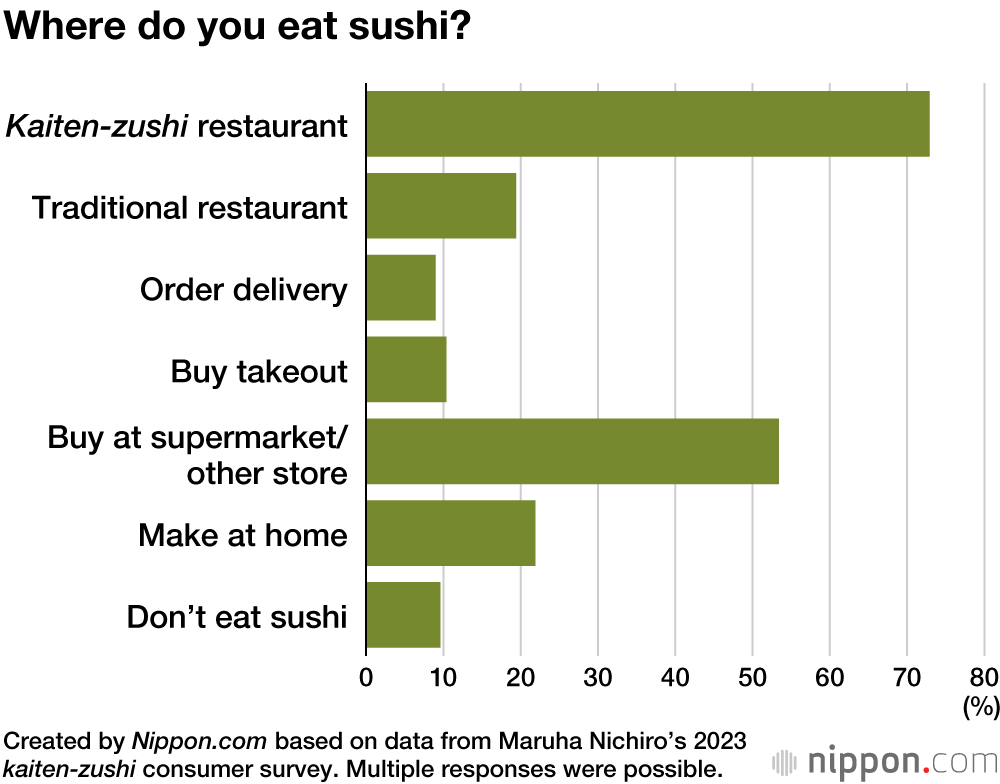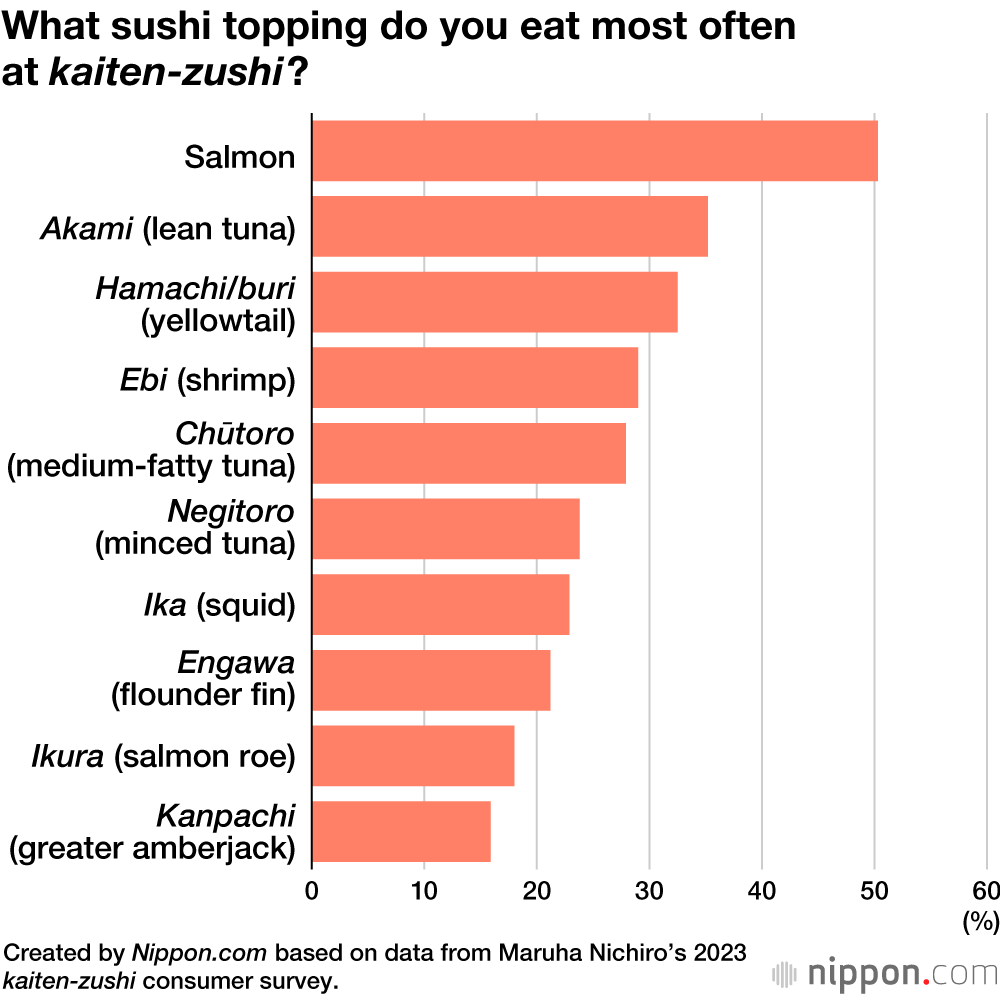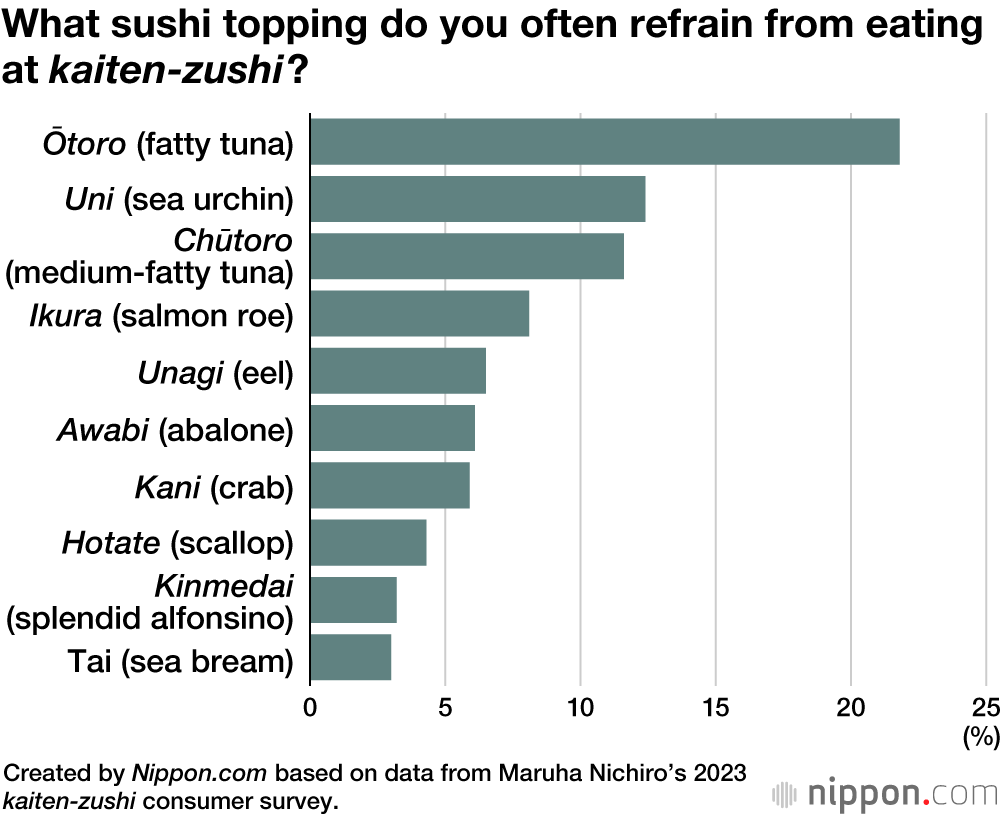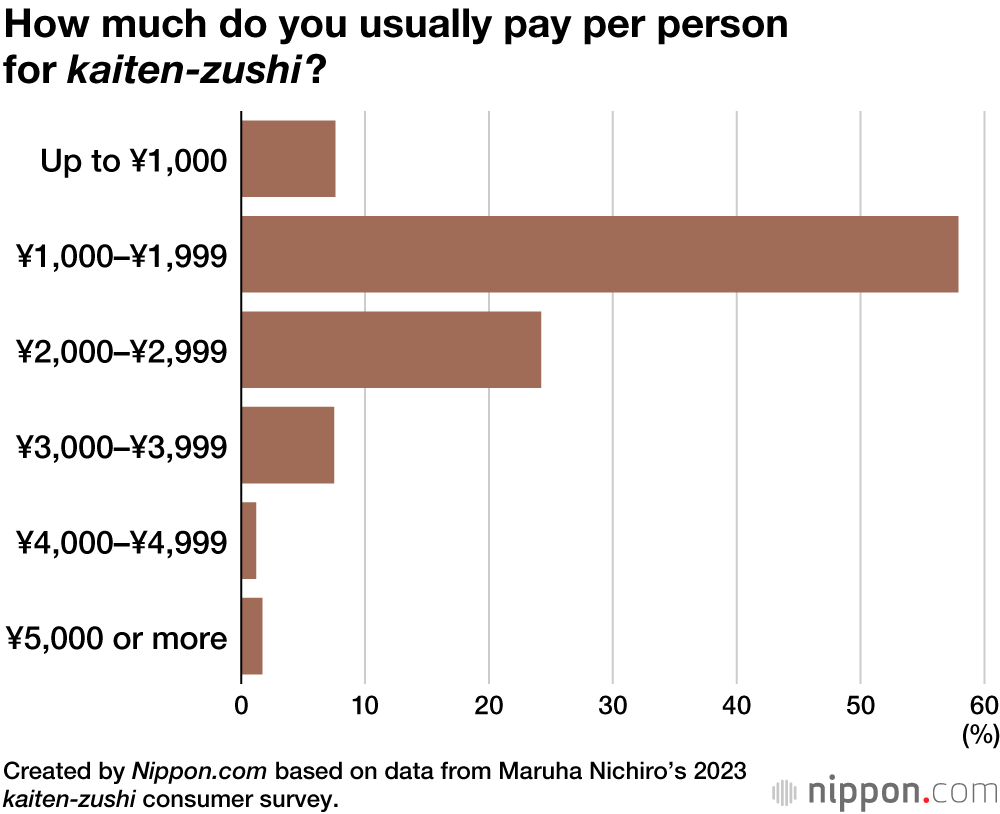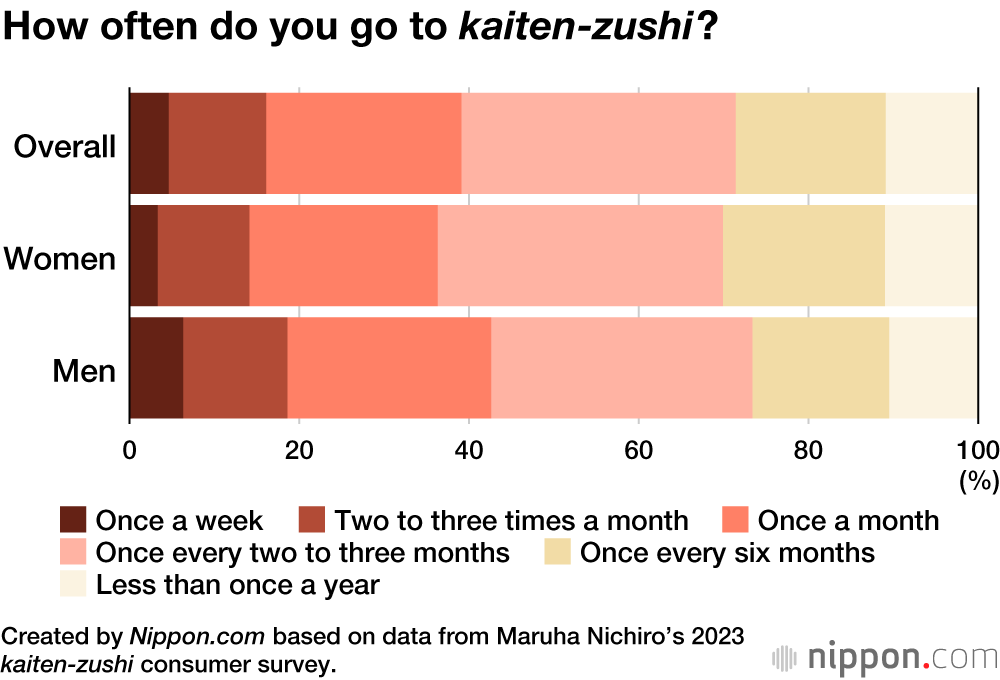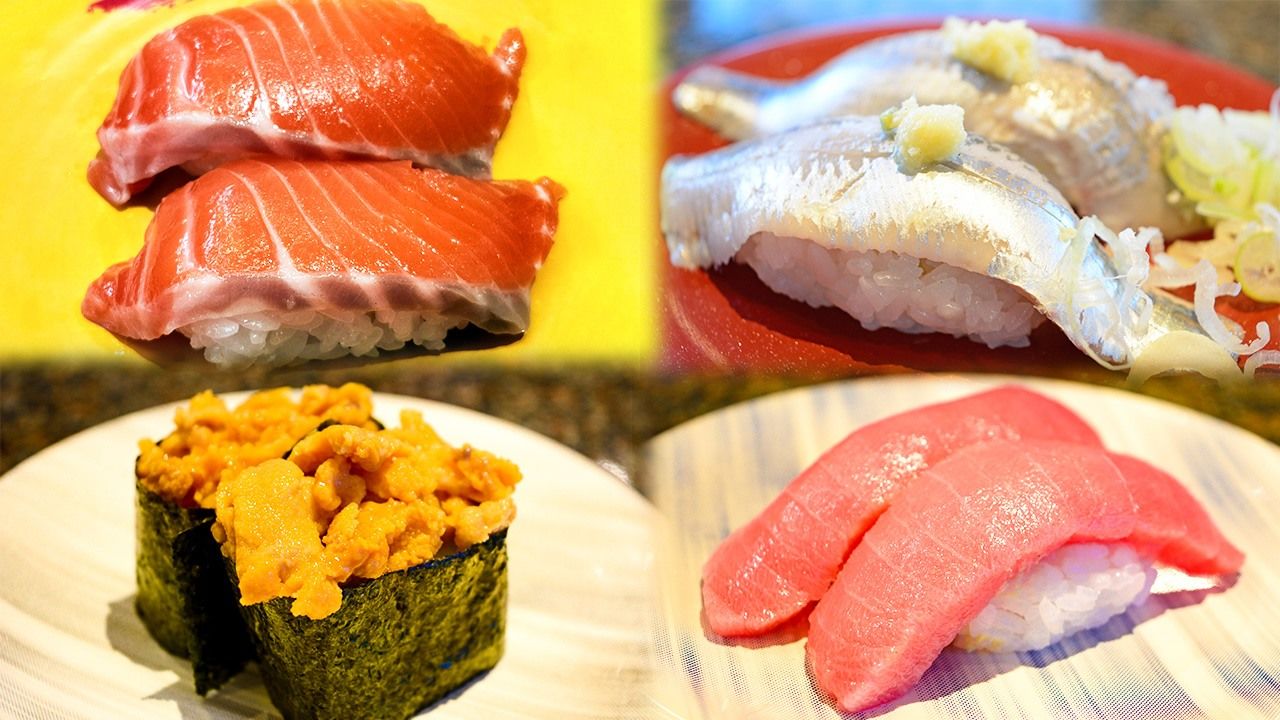
Salmon an Enduring Favorite at Japan’s Conveyor-Belt Sushi Restaurants
Food and Drink Economy- English
- 日本語
- 简体字
- 繁體字
- Français
- Español
- العربية
- Русский
Kaiten-zushi (conveyor-belt sushi) has helped Japan’s famous delicacy become a more accessible and reasonably priced meal choice.
The seafood company Maruha Nichiro recently conducted its annual consumer survey on kaiten-zushi, targeting more than 10,000 people aged between 15 and 59 nationwide. When respondents were asked if they preferred to eat sushi at a restaurant or buy it to eat at home, an overwhelming 72.9% replied they ate at kaiten-zushi restaurants.
Asked about the toppings that people ate most often at kaiten-zushi restaurants, the majority, with 50.3%, answered salmon, more than 15 percentage points ahead of akami (lean tuna) that ranked second. Salmon has placed first for the last twelve consecutive years since the 2012 survey. However, while it could be said that it is a firm favorite, the survey also revealed that people often hold back from eating more luxurious toppings, like ōtoro (fatty tuna), chūtoro (medium-fatty tuna), uni (sea urchin), awabi (abalone), and ikura (salmon roe).
Salmon may be an essential way for people to gain a sense of satisfaction, while suppressing the urge to order more expensive toppings, so that they can stay within their budgets.
At 57.9%, the most common range for money spent on kaiten-zushi per person was ¥1,000–¥1,999, and the average was ¥1,690. Approximately 40% of people went to a kaiten-zushi restaurant once a month. Salmon is a perfect way to indulge in a little bit of luxury without breaking the bank.
(Translated from Japanese. Banner photo © Pixta.)
